Minutes Did Not Exist During The Middle Ages
Conny Waters - AncientPages.com - Medieval people used many instruments to keep track of time. During the Middle Ages, a combination of water clocks, sundials, and candle clocks could tell time, but none could determine the time to the minute.
Prague astronomical clock. Steve Collis from Melbourne, Australia - CC BY 2.0
Minutes were simply not used to measure time during the Middle Ages. Both the medieval and modern "day" (sunrise to sunrise) contain 24 hours, but medieval hours varied in length with the month and the time of day.
While the best water clocks told time to the quarter hour, people could tell time to the minute until the wide use and improvement of mechanical clocks.
On the equinoxes (March 21 and September 21), a medieval daylight hour equaled a nighttime hour, each containing a modern 60 minutes. But on Christmas in medieval London, a daylight hour contained only 40 minutes, while each nighttime hour contained 80 minutes. Of course, on St. John's Day (June 24), a medieval daylight hour in London had 80 minutes, and a nighttime hour contained only 40 minutes.
Žatec clock. Tower clock of Hop and Beer Temple. image credit: Martin Stross - CC BY-SA 3.0
We measure time in units of sixty because we still use the system worked out by the Sumerian civilization, which flourished in Mesopotamia about 2,000 B.C.E.
The Sumerians invented the Sexagesimal System based on the number 60. Sixty seconds in a minute, sixty minutes in an hour - and the Sumerians also had a calendar with 360 (60x6) days in a year. To make it work for all time units, the Sumerians also fixed twelve hours (double six) in a day, midnight, and roughly 12 months in a year (especially in a 360-day year).
The Babylonians, who lived after the Sumerians in Mesopotamia, also based their mathematics on the number 60. It was because the number 60 is a superior, highly composite number, having factors of 1, 2, 3, 4, 5, 6, 10, 12, 15, 20, 30, and 60.
The ancient Egyptians were no different and used time calculation on the number 60. They divided their year into three 120-day seasons of four months of 30 days. They defined the hour as either 1/12 of daytime or 1/12 of nighttime.
However, it took a long time before we started using minutes as a time measurement.
Jost Burgieven is credited with inventing the minute hand in 1577. The minute hand was not widely added to clocks until the 1680s. The mechanical clock was developed to a reasonable accuracy level in the 14th and 15th centuries.
In the 17th century, pendulum clocks were developed, enabling the measurement of seconds and minutes. The Royal Society in the U.K. first proposed the second as a unit of time. The duration of a beat or half period (one swing, not back and forth) of a pendulum one meter in length on the earth's surface is approximately one second.
Written by Conny Waters - AncientPages.com Staff Writer
Copyright © AncientPages.com All rights reserved. This material may not be published, broadcast, rewritten or redistributed in whole or part without the express written permission of AncientPages.com
Expand for referencesMore From Ancient Pages
-
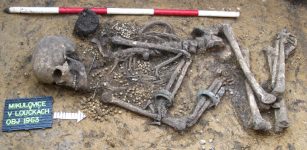 Central European Prehistory Was Highly Dynamic – New Study Shows
Archaeology | Aug 27, 2021
Central European Prehistory Was Highly Dynamic – New Study Shows
Archaeology | Aug 27, 2021 -
 Independent Invention: Iconic Native American Stone Tool Technology Discovered In Arabia
Archaeology | Aug 6, 2020
Independent Invention: Iconic Native American Stone Tool Technology Discovered In Arabia
Archaeology | Aug 6, 2020 -
 On This Day In History: Terracotta Army Buried With Emperor Qin Shi Huang Discovered – On Mar 29, 1974
News | Mar 29, 2017
On This Day In History: Terracotta Army Buried With Emperor Qin Shi Huang Discovered – On Mar 29, 1974
News | Mar 29, 2017 -
 Golden Secrets Of Lake Guatavita And The Muisca People Gave Rise To The El Dorado Myth
Featured Stories | Nov 12, 2019
Golden Secrets Of Lake Guatavita And The Muisca People Gave Rise To The El Dorado Myth
Featured Stories | Nov 12, 2019 -
 Artifacts And Remnants Of 3,000-Year-Old City Unearthed Near Great Zab River In Iraqi Kurdistan
Archaeology | Jun 5, 2017
Artifacts And Remnants Of 3,000-Year-Old City Unearthed Near Great Zab River In Iraqi Kurdistan
Archaeology | Jun 5, 2017 -
 Controversial Artifact Fuente Magna Could Re-Write Ancient History – America’s Mysterious Rosetta Stone
Artifacts | Oct 18, 2014
Controversial Artifact Fuente Magna Could Re-Write Ancient History – America’s Mysterious Rosetta Stone
Artifacts | Oct 18, 2014 -
 Unclear Purpose Of Mysterious Rock-Cut City Of Petra – Was It A Fortress Or Sacred City?
Featured Stories | May 30, 2020
Unclear Purpose Of Mysterious Rock-Cut City Of Petra – Was It A Fortress Or Sacred City?
Featured Stories | May 30, 2020 -
 Early Twelfth-Century Castle Walls Unearthed Outside Gloucester, England
Archaeology | Dec 9, 2015
Early Twelfth-Century Castle Walls Unearthed Outside Gloucester, England
Archaeology | Dec 9, 2015 -
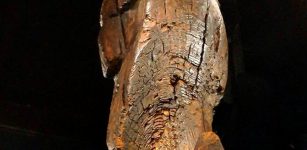 Siberian Shigir Idol With Seven Faces Is The World’s Oldest Wooden Sculpture
Archaeology | Sep 1, 2015
Siberian Shigir Idol With Seven Faces Is The World’s Oldest Wooden Sculpture
Archaeology | Sep 1, 2015 -
 Unusual Fog, Mysterious Forest Disappearances, And Unexplained Lights In Finland – What Is The Connection?
Featured Stories | Nov 14, 2024
Unusual Fog, Mysterious Forest Disappearances, And Unexplained Lights In Finland – What Is The Connection?
Featured Stories | Nov 14, 2024 -
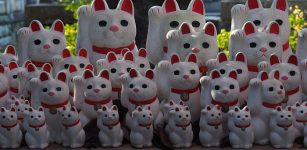 Beautiful Legend Of Maneki-neko – The Japanese Good Luck Charm Cat Raising A Paw
Featured Stories | Oct 10, 2021
Beautiful Legend Of Maneki-neko – The Japanese Good Luck Charm Cat Raising A Paw
Featured Stories | Oct 10, 2021 -
 Hydra Greek Monster: Fearsome Multi-Headed Dragon That Inhabited Swamps Of Lerna
Featured Stories | Sep 20, 2019
Hydra Greek Monster: Fearsome Multi-Headed Dragon That Inhabited Swamps Of Lerna
Featured Stories | Sep 20, 2019 -
 Mysterious Mohenjo Daro Was Home To An Unknown Advanced Civilization Far Ahead Of Its Time
Civilizations | Apr 2, 2014
Mysterious Mohenjo Daro Was Home To An Unknown Advanced Civilization Far Ahead Of Its Time
Civilizations | Apr 2, 2014 -
 Hidden Carving Of Stonemason Never Meant To Be Seen Discovered In Cathedral Santiago De Compostela
News | Nov 2, 2020
Hidden Carving Of Stonemason Never Meant To Be Seen Discovered In Cathedral Santiago De Compostela
News | Nov 2, 2020 -
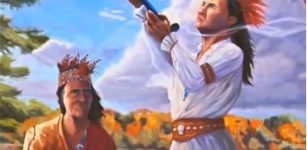 Hiawatha And The Legendary Great Peacemaker – Native American Heroes Who Founded The League Of The Iroquois
Featured Stories | Feb 25, 2019
Hiawatha And The Legendary Great Peacemaker – Native American Heroes Who Founded The League Of The Iroquois
Featured Stories | Feb 25, 2019 -
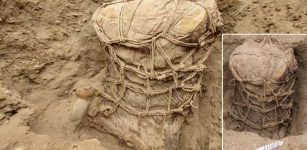 A 500-Year-Old Funerary Bundle And Pottery Probably Belonging To Ychsma Culture – Unearthed Near Lima, Peru
Archaeology | May 22, 2023
A 500-Year-Old Funerary Bundle And Pottery Probably Belonging To Ychsma Culture – Unearthed Near Lima, Peru
Archaeology | May 22, 2023 -
 Unique Ancient Man-Made Underground Structure In New England Puzzles Experts – Who Built It And Why?
Featured Stories | Aug 11, 2024
Unique Ancient Man-Made Underground Structure In New England Puzzles Experts – Who Built It And Why?
Featured Stories | Aug 11, 2024 -
 Royal Tombs Of Alexander The Great’s Family At Vergina, Greece Finally Identified
Archaeology | Jan 31, 2024
Royal Tombs Of Alexander The Great’s Family At Vergina, Greece Finally Identified
Archaeology | Jan 31, 2024 -
 Unique Ancient Figurine Puzzles Scientists – Was She An Unknown Pre-Historic Water Goddess?
Archaeology | Jul 21, 2022
Unique Ancient Figurine Puzzles Scientists – Was She An Unknown Pre-Historic Water Goddess?
Archaeology | Jul 21, 2022 -
 Mikoshi-Nyudo: Evil, Bald-Headed And Long-Necked Yokai Goblin In Japanese Folklore
Featured Stories | Sep 12, 2024
Mikoshi-Nyudo: Evil, Bald-Headed And Long-Necked Yokai Goblin In Japanese Folklore
Featured Stories | Sep 12, 2024


